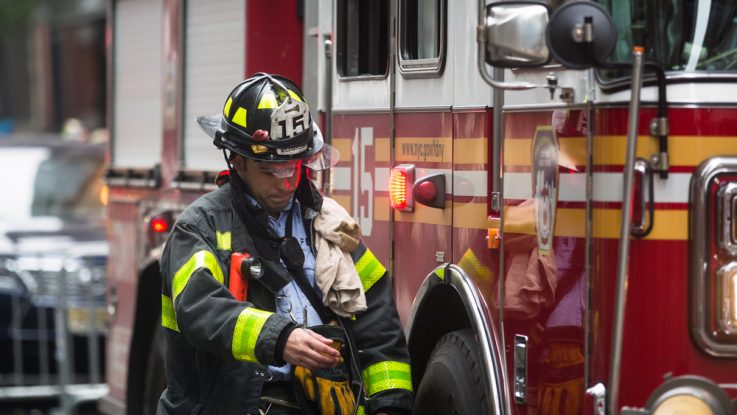
New York City’s Fire Department (FDNY) is partnering with NYU Tandon School of Engineering’s C2Smarter transportation center to use digital twin and AI technology to analyze and improve emergency vehicle travel times. C2Smarter – Connected Communities for Smart Mobility towards Accessible and Resilient Transportation for Equitably Reducing Congestion – is a solution-oriented research center which addresses urban mobility challenges.
The C2SMARTER team’s “Traffic Digital Twin” uses open-source traffic simulation software called Simulation of Urban Mobility (SUMO). The virtual environment will integrate real-time traffic data from cameras and sensors in the Harlem neighborhood, along with dispatch data from FDNY vehicles. Artificial intelligence will be used to mimic driver behavior and reactions to sirens and other signals from emergency vehicles. The research team will use the digital twin to zero in on the causes of slow-downs and then test solutions before they attempt to replicate the model on city streets. The FDNY reports that response times have risen from six minutes and 45 seconds to seven minutes 26 seconds over the past 10 years.
“Communities like Harlem have been underserved in the past. They can see significant benefits from faster emergency vehicle responses,” said Joseph Chow, the project’s principal investigator. “The project with FDNY is a prime example of C2SMARTER’s commitment to using New York City as a living laboratory to create engineering solutions that improve urban mobility and make life better for all New Yorkers.”
Traditional methods for evaluating potential emergency-response improvements – such as infrastructure modifications, fleet enhancements, and alternative routing – are much more costly and disruptive to do in the real world than virtually.
“If successful, this Digital Twin will be the first of its kind in the U.S., advancing the adoption of cutting-edge technologies for emergency response,” said Jingqin Gao, Assistant Director of Research at C2SMARTER. “This unique approach – incorporating real-world data, promises a refined AI training environment and a comprehensive understanding of urban reactions to Emergency Medical Vehicle interventions — is not available elsewhere in the U.S. The study aims to provide a scientific benchmark, guiding future research. It could encourage other emergency agencies, especially in congested urban areas, to adopt similar Digital Twins and interventions.”